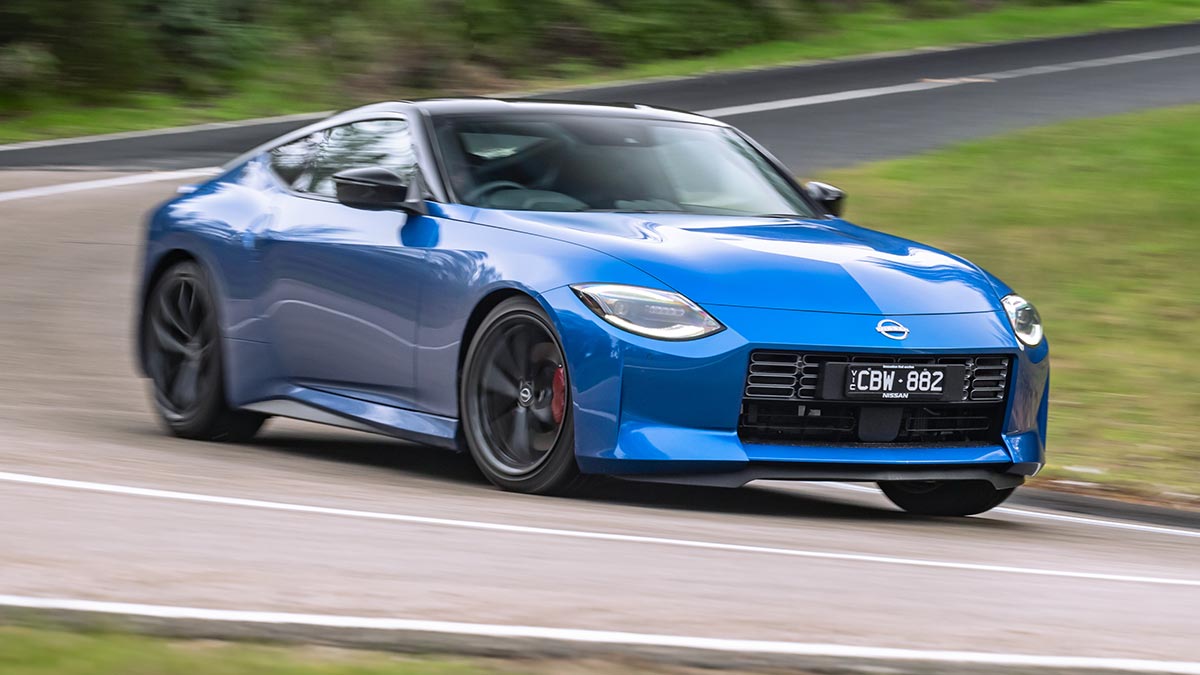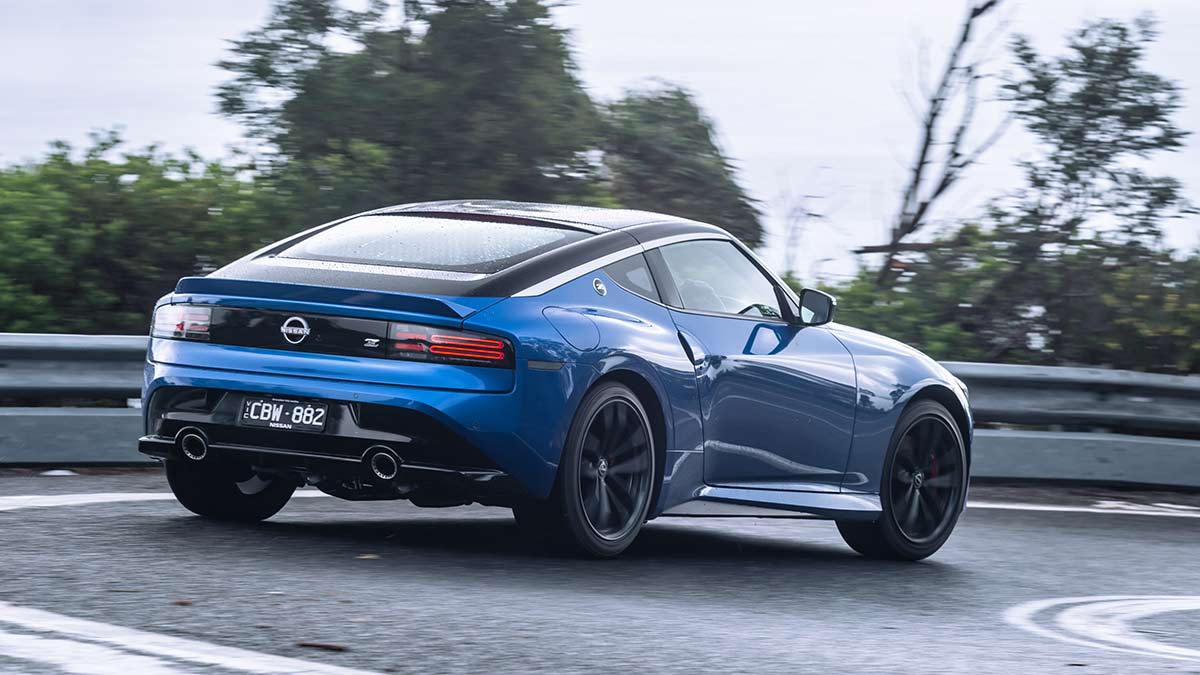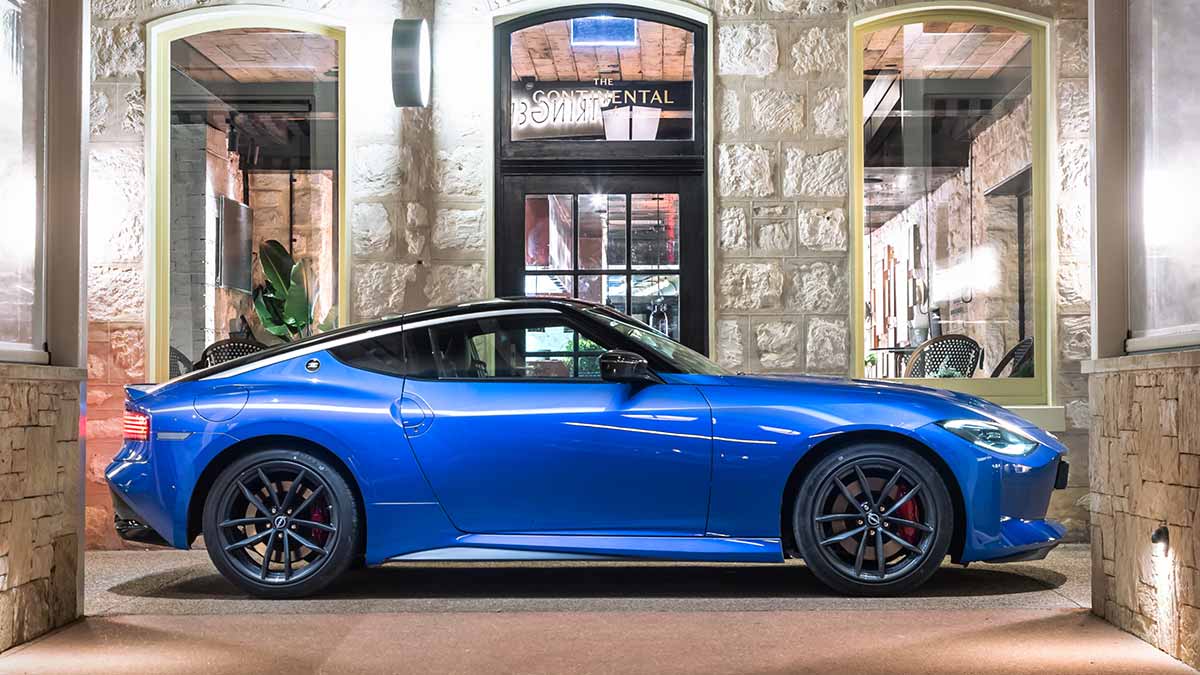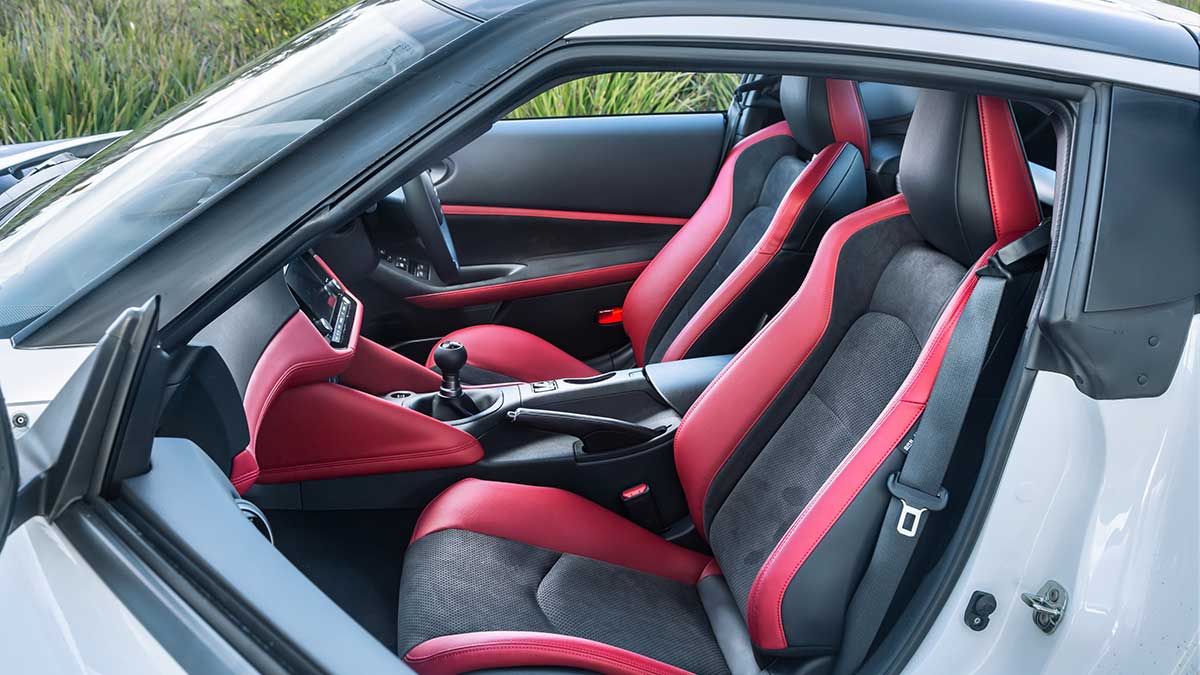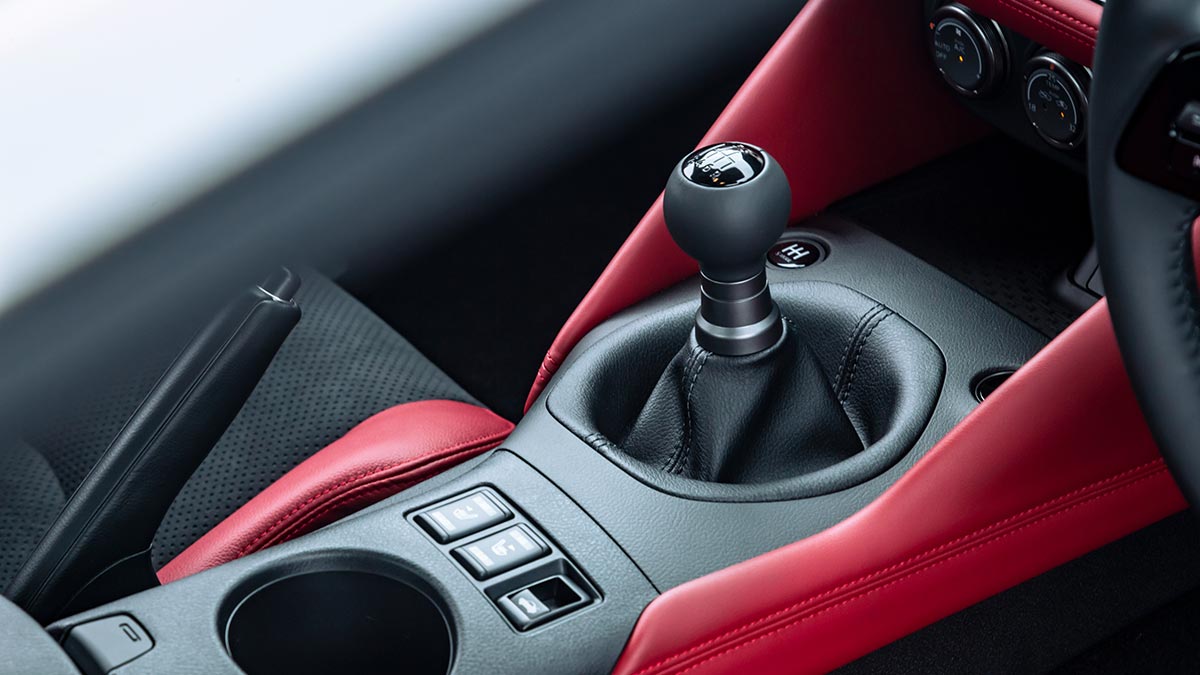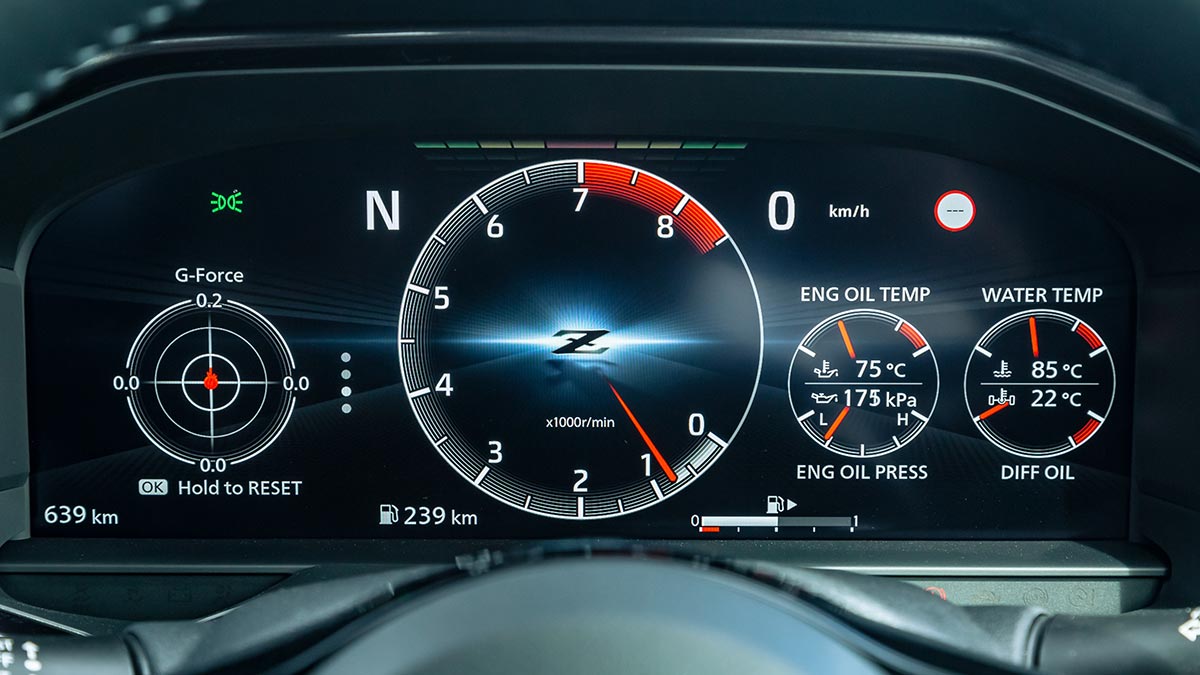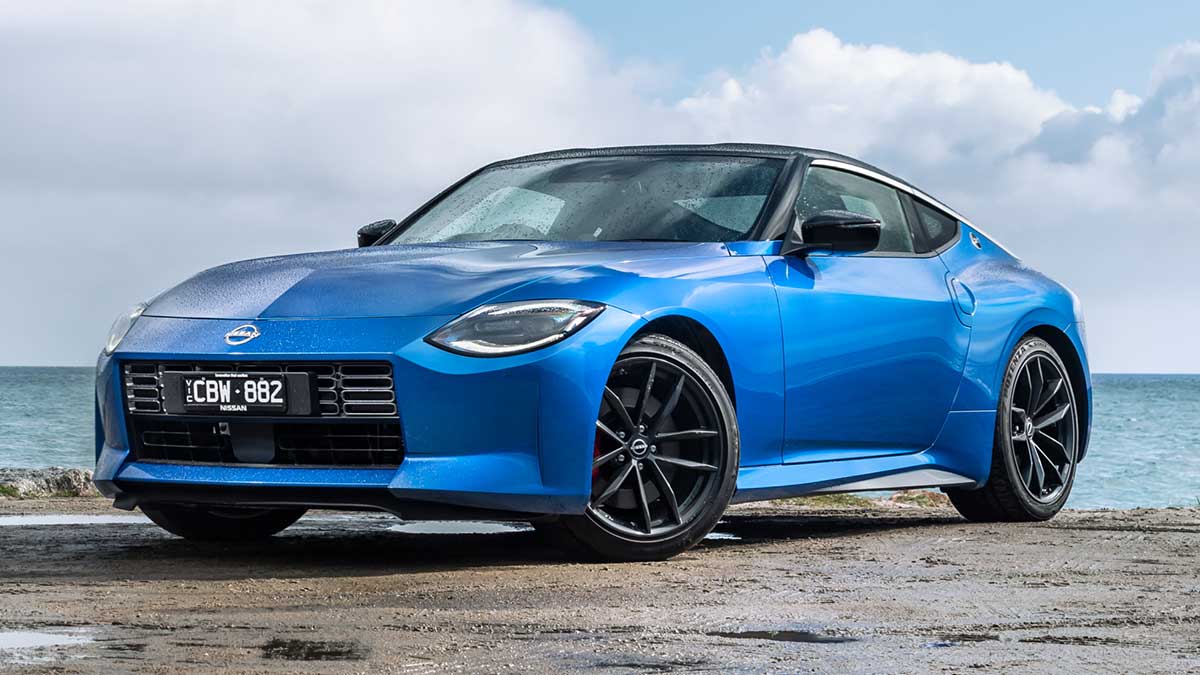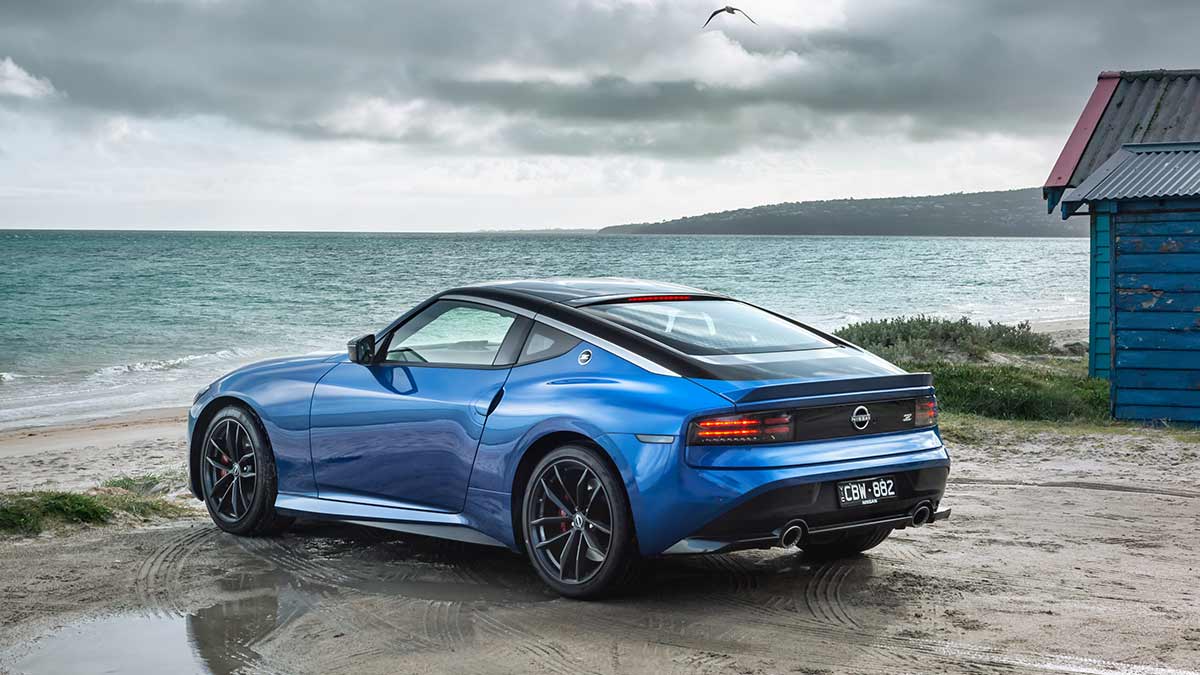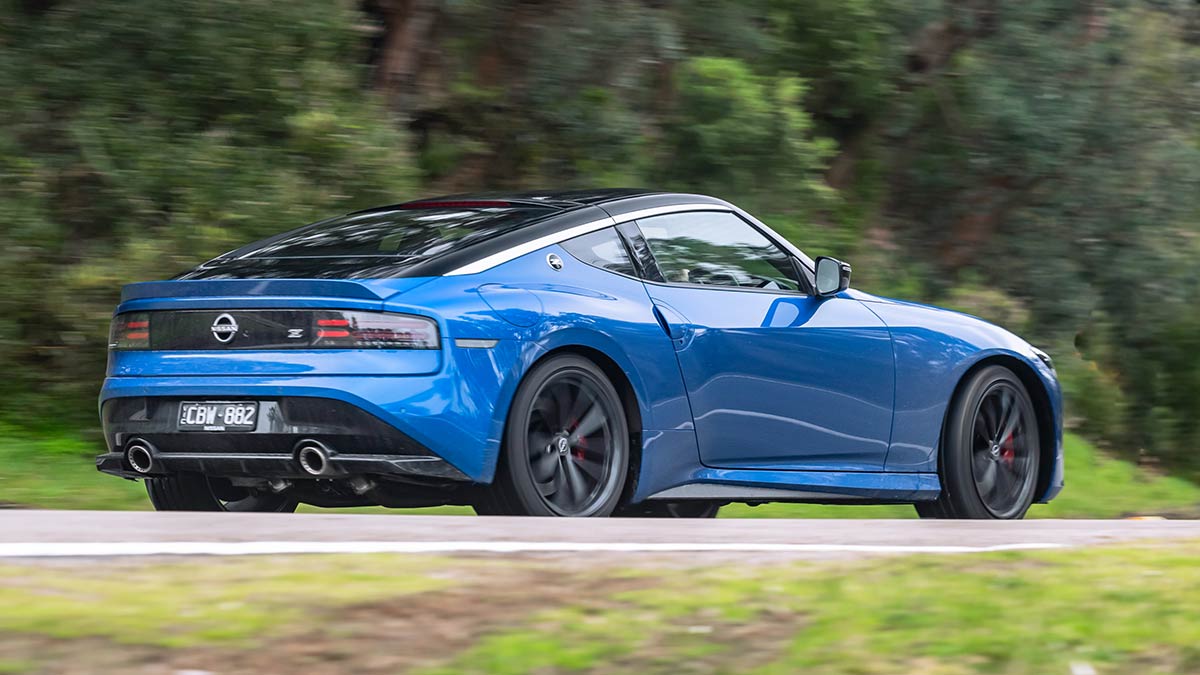The GWM Haval H6 has been transformed with local suspension tuning, a plug-in hybrid powertrain and other major updates, moving from ‘hard to recommend’ to a medium SUV that’s now worth a closer look.
Sports car revival: 2022 Nissan Z first drive review

It’s been 13 years since Nissan last launched a Z sports car, and the seventh-generation model is an impressive new contender to challenge the Toyota Supra and Ford Mustang.
Nissan has 1,200 cashed-up buyers waiting for their ship to come in bearing the two-door Z sports car.
As is the case with all car companies battling supply chain bottlenecks, the Japanese car maker can’t say when delivery will be.
Nissan Australia managing director, Adam Peterson, is wary of putting a definite timeline on it, but hopes to have the pre-orders satisfied by the end of the Japanese financial year: March, 2023.
“We’ll get them here as quickly as we can but the pent-up demand for the Z extends to every market it is sold in and supply chain volatility doesn’t help,” Peterson said.
Overall, the Nissan Z is worth the wait. It isn’t as focused as a Toyota Supra, or as cheap as a Ford Mustang. It does, however over a hugely entertaining drive while being able to comfortably be used as a daily driver.
For those looking for the ultimate Nissan sports car, there’s the GT-R, also known as 'Godzilla'.
As Nissan Z program director Hiroshi Tasuma points out, the GT-R is intended to be battle, the Z is more of an engagement.
“GT-R is more of ‘I want to control this beast’, like a rodeo ride. Z is more of a dance partner. One tyre can handle around 150 horsepower, so GT-R with four-wheel drive has 600hp.
Nissan Z as two-wheel drive then should have 300hp. It has 400hp, so you have to lead your dance partner carefully. It has to be exciting.”
On this page
- How much does the Nissan Z cost?
- Is the Nissan Z safe?
- What's the Nissan Z like inside?
- What's under the Nissan Z bonnet?
- Is the Nissan Z efficient?
- How does the Nissan Z drive?
- Should I buy one?
How much does the Nissan Z cost?
The Nissan Z kicks off at $73,300 plus on-road costs. There was a limited-edition Proto version for $80,700, but that sold out months ago.
Premium paint for the coupe costs $700 and the two-tone exterior colour scheme is $1200.
Unusually, buyers don’t have to pay a premium for the nine-speed automatic transmission (alternatively, they’re paying a premium for the six-speed manual gearbox).
Standard equipment includes 19-inch alloy wheels, ventilated disc brakes with four-piston callipers up front and twin-piston units on the rear and a twin-turbo six-cylinder engine.
Service pricing has yet to be announced, but based on the outgoing 370Z, expect it to be around $1900 for five years, which is the duration of the warranty.
For illustrative purposes, a V8 Ford Mustang coupe costs $65,290 plus on-road costs and the Toyota Supra starts at $86,494.
Is the Nissan Z safe?
It is too early to tell. ANCAP hasn’t crash-tested the Nissan Z and also didn’t assess its predecessor, the 370Z.
Toyota’s Supra (and its BMW Z4 twin) also haven’t been officially tested.
Sports cars are often overlooked in the crash-test regimen because they sell in relatively low numbers. ANCAP crash test the Ford Mustang back in early 2017 and awarded the vehicle just two stars. By the end of the year a Mustang with revised safety assist features saw the Mustang’s score climb to three stars.
The Nissan Z has six airbags, autonomous emergency braking, traffic sign recognition, blind-spot and lane departure warnings and rear cross-traffic alert.
What’s the Nissan Z like inside?
The Z is a heavily modified version of the 370Z. That means there are now two cupholders instead of just one between the seats. Otherwise, storage space is fairly limited.
The door pockets are slim, the glovebox is tiny and the boot (visible behind the front seats) is restricted to just 241 litres despite the car having a tyre repair kit rather than a space-saver spare.
The 8.0-inch infotainment touchscreen is a revised version of that found in the 370Z, but it still doesn’t have satellite navigation.
Nissan’s product planning head, Travis Maher, said the inclusion of Android Auto and Apple CarPlay will see the majority of drivers prefer to navigate using their smartphone.
“If we see any negative feedback from customers, we will make adjustments if necessary,” Maher said.
A 9.0-inch infotainment display with satnav is available in overseas markets - expect it to make an appearance in Australian-spec cars sooner rather than later.
Inbuilt satnav has inherent disadvantages, not least of which is the need to update maps. One of the benefits, however, is the fact the map is still available when phone coverage drops out.
It may not be an issue in the confines of the city, but it could be on interstate trips via the back roads - and they’re precisely the types of routes you'd want as a Nissan Z owner.
What’s under the Nissan Z’s bonnet?
The heart of the new Z is a 3.0-litre V6 twin turbo engine paired to owner’s choice of a nine-speed automatic or six-speed manual.
The engine cranks out a more-than healthy 298kW and 475Nm, the latter figure available from 1,600-5,600rpm.
Nissan hasn’t released official 0-100km/h times but US motoring outlets are reporting times around 4.5 seconds.
For comparison, a Toyota Supra generates 285kW/500Nm from its 3.0-litre six-cylinder inline turbo engine. Power is transferred to the rear wheels using a six-speed manual or eight-speed auto. The claimed 100km/h time is 4.1 seconds.
The Ford Mustang V8 is good for a thoroughbred 339kW/556Nm, delivered using a six-speed manual or 10-speed auto. The auto is good for a 4.3-second 100km/h time.
Is the Nissan Z efficient?
Nissan quotes a combined fuel consumption is of 9.8 litres over 100km for vehicles fitted with the automatic transmission and 10.8 litres/100km for the manual version.
That isn’t horrible for a high-performance V6 turbo engine. Drive it like a sports car and those figures will climb appreciably, though.
What is the Nissan Z like to drive?
The Z is a car that challenges you to master its capabilities. As such the driver’s aids are intentionally configured to provide a degree of latitude before they engage.
There’s enough leeway to embarrass yourself if you’re not paying attention, which is precisely how Tamura-san intended the car to behave.
“A sports car should be engaging. It is not just about steering and pushing the pedals, but feeling what the car is doing underneath you and being able to adapt to it and to the road,” he said.
With that much power and torque on tap, owners will quickly learn to adapt. The Nissan Z is happy to step its tail out on corner exit and the stability control is happy for that to occur to a greater degree than most cars before it intervenes.
A set of lights on the top of the 12.3-inch digital driver’s display indicate when the driver should shift gears and there’s also a G-meter to show what forces are being applied to the car and in which direction.
The exhaust note is about as good as ever-more-stringent regulations will allow. It sounds purposeful rather than potent. That gives aftermarket types something to work with, as will the Bridgestone Potenza tyres.
They’re good for an original equipment fit but I’d be looking to upgrade the rubber once they’ve been worn out.
The suspension isn’t adaptive (that would have driven up the cost) but is a well-reasoned balance between compliance for every day driving and being convincing enough to justify the sports car styling.
Should I buy one?
The Nissan Z ticks a lot of boxes for those looking for an old-school sports car with modern performance.
Objectively the Toyota Supra is a more polished performer; so it should be with a $13,000 price premium.
The Ford Mustang undercuts the Nissan Z on price and is a quick and composed vehicle. Seat of the pants feel says it doesn’t have the mid-corner balance of the Nissan.
Determining just where the Z fits in the two-door sports coupe echelons will be a hot debate in the coming months.
The information provided is general advice only. Before making any decisions please consider your own circumstances and the Product Disclosure Statement and Target Market Determinations. For copies, visit racv.com.au. As distributor, RACV Insurance Services Pty Ltd AFS Licence No. 230039 receives commission for each policy sold or renewed. Product(s) issued by Insurance Manufacturers of Australia ABN 93 004 208 084 AFS Licence No. 227678.
